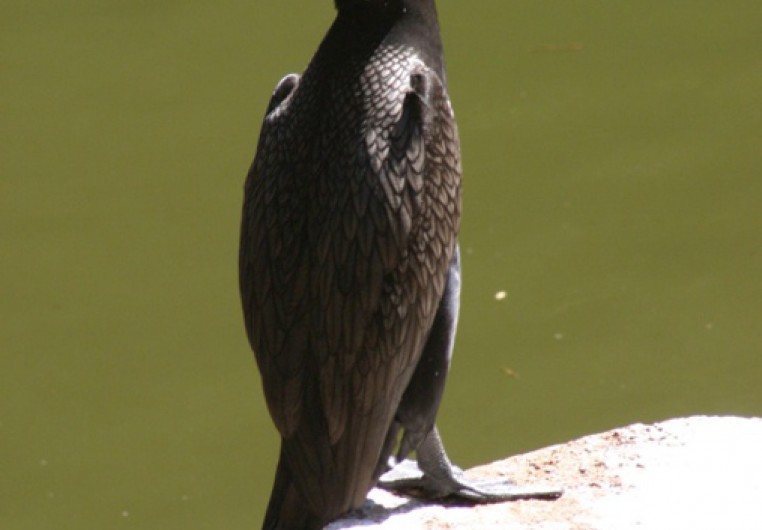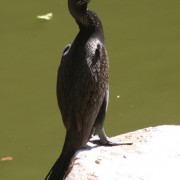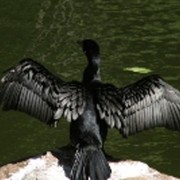Biodiversity
 Neotropic Cormorant
Phalacrocorax brasilianus | Gmelin, 1789
Neotropic Cormorant
Phalacrocorax brasilianus | Gmelin, 1789

Characterization: Large species measuring about 75cm in length. This bird is black with a yellow gular sac and, during the breeding season, it has white feathers bordering the bare neck and a white tuft behind its auricular region. When young, it is soot-colored.
Distribution: From Mexico to South America.
Habitat: Lakes, large rivers, and estuaries.
Habits: Diurnal and aquatic species, becoming completely soaked during dives; it then stretches its wings to dry its feathers and/or adjust its body temperature. It flies at great heights to reach remote locations, and in flocks it flies in wide, open wedge formations. It rests landing near the water, on rocks, trees, poles or even on cables.
Diet: Carnivorous, more specifically piscivorous; this bird catches fish by diving to depths of up to 20m.
Breeding: It lays its eggs in a nest built on trees in flooded forests, "sarandi" trees, and even in heron colonies.
In the UFRA area: The Neotropic Cormorant is a species of bird that has been only seen in mixed forests in regeneration. This represents a restricted spatial distribution. It is considered rare in these areas, as it was seen only once.





